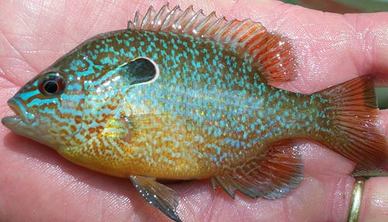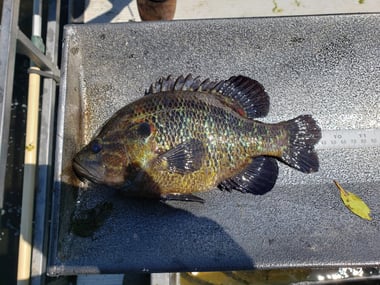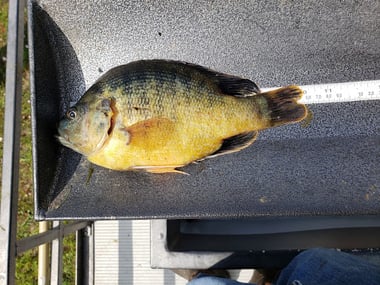
- 3b. Has a small mouth, the rear of gill flap is flexible (not including earflap), and an earflap that is typically elongated, especially in males
- Longear Sunfish (Lepomis megalotis)

- 4a. Rear part of soft dorsal containing dark spot, ear flap without red/orange border
- Bluegill (Lepomis macrochirus)
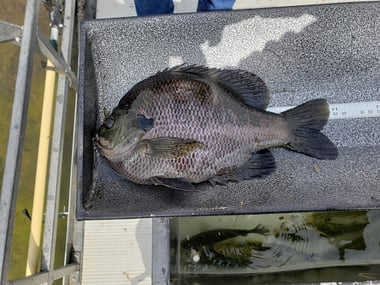
- 4b. Soft dorsal containing no spots, ear flap with red/orange border
- Redear (Lepomis microlophus)
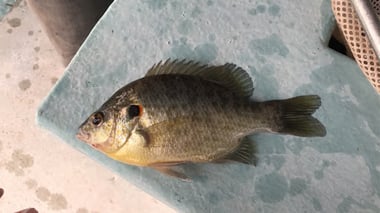
List of Sunfish Characteristics
Bluegill (Lepomis macrochirus)
- Small mouth
- Pectoral fin extends beyond eye when folded forward
- Earflap lacking red/orange margin
- Dark spot on rear of soft dorsal
Redear (Lepomis microlophus)
- Small mouth
- Pectoral fin, long and pointed and extends beyond eye when folded forward
- Earflap with red/orange margin
- Soft dorsal without spots
Longear Sunfish (Lepomis megalotis)
- Small mouth
- Pectoral fins, rounded and do not extend beyond eye when folded forward
- Earflap often elongated (especially in males)
- Pectoral fin with 14 rays
Green Sunfish (Lepomis cyanellus)
- Large mouth
- Earflap not elongated
- Pectoral fin, rounded and does not extend beyond eye when folded forward
- Often has dark spot on posterior of soft dorsal
- Does not have dark line radiating out from eye on operculum (gill cover)
Warmouth (Lepomis gulosus)
- Large mouth
- Dark lines radiating out from eye on operculum (gill cover)
- Pectoral fins, rounded and does not extend beyond eye when folded forward
Know Which Sunfish You Want in Your Pond
Each species of sunfish play distinct roles in your pond’s ecosystem. By knowing which species of sunfish are present in your pond, you can then adjust your management strategies accordingly. Sunfish, such as Warmouth and Green Sunfish, compete with bass for resources and are not recommended for your pond. Beneficial species include Bluegill, which are needed for forage sustainability, and Redear that will act as a biological control for parasite prevention. For more in-depth information on each species, contact Pond King, and we will be happy to answer any questions.


